|
|
|
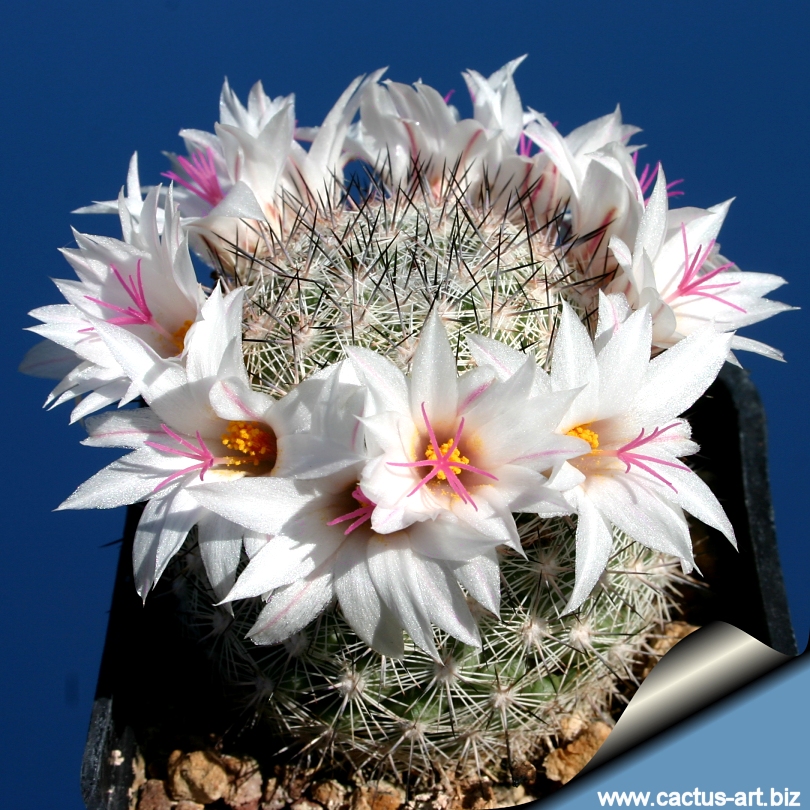
Mammillaria slevinii
An eye-catching plant, but not the easiest species to grow.
Should be carefully watered, especially in light of its small root
system.
|
Description: Clustering
cylindrical cactus with spines nearly obscuring the stem
Stem: Columnar, pale green, up to 20 cm tall, 6 cm in diameter
branching basally
Tubercles: Broadly conical, without latex
Axil: Woolly, dense wool in the flowering zone and a few
bristles, white with dark brown tips.
Central spines: 4 to 8, with sometimes one hooked, white with
brown tips, 8 - 10 mm long.
Radial spines: 14-21 , white, 5 - 8 mm long.
Flowers: Around the top, white to pale pink., with pinkish mid-veins,
up to 20 mm in diameter.
Blooming season (Europe): June, August.
Fruit: Club-shaped, orange to red, 10 - 18 mm.
Seed: Nearly round, black.
|
|
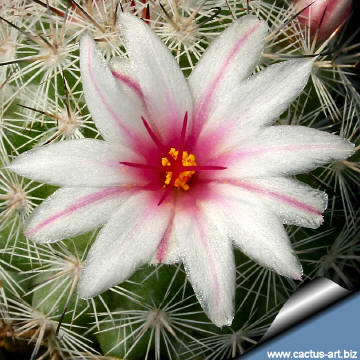 |
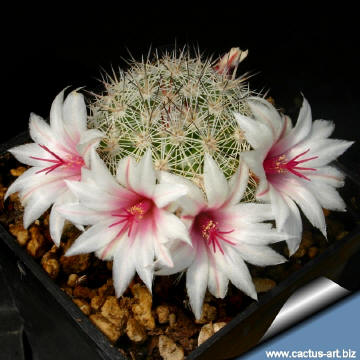
|
|
Mammillaria slevinii
forms rings of showy white to pale pink
flowers with a pinkish midvein in summer.
Propagation: Direct sow after last frost, or use
cuttings.
|
|


Advertising
|
|
|
|
|
Family:
Cactaceae (Cactus
Family) |
|
Mammillaria slevinii
Scientific name: Mammillaria
albicans (Britton & Rose) Berger 1929
First description: Neomammillaria albicans by
Briton & Rose 1923
Origin: Mexico (Baja California Peninsula and various
islands, Mexico.
Habitat: Grows on limestone-rich
substrata, altitude 10 to 200 m.
Conservation status: Listed in
CITES appendix 2.
Other
Synonyms:
- Chilita slevinii,
- Bartschella albicans
- Mammillaria albicans fa dolorensis
- Mammillaria
albicans fa slevinii
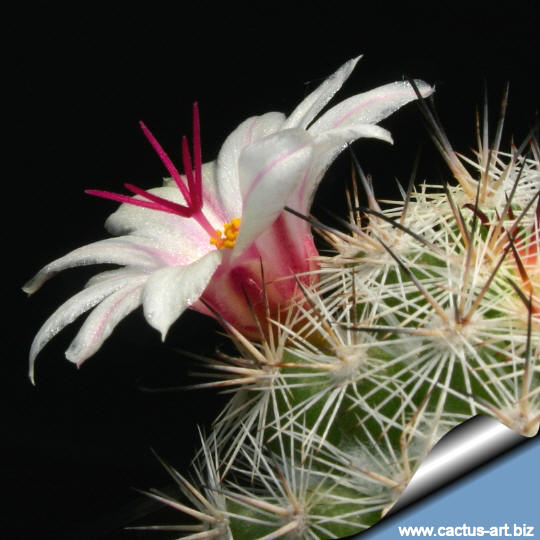 |
| |
|
|
|
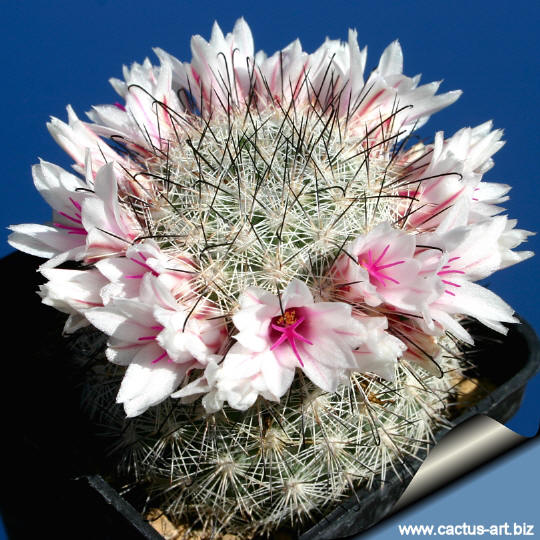
|
|
Cultivation: It is slow-growing, and not especially easy to grow. Use
pot with good drainage and a very porous
mineral-based potting mix. Potted plants are quite
wet-sensitive, especially in light of its small root
system. Water sparingly during the
growing season, keep very dry in
winter. Feed
with a high potassium fertilizer in summer.
Usually it is recommended to
overwinter this plant in a bright and warm greenhouse with at least
8-10° C, but it has proved to be quite
frost resistant
(if kept dry, it's hardy as low as -5° C).
Strong light is required for flowering.
Some plants will offset readily, and clumps can be produced in a very
few years.
|
|